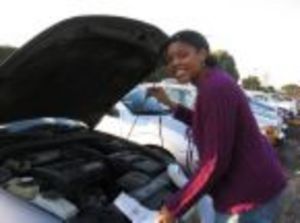A car is one of the biggest expenses you will have in your lifetime. Besides a house, your car is usually the second biggest investment you make. It can be a money pit or a big money saver, depending on the car you choose and more importantly, the way you take care of your investment. Cars are notoriously a bad investment because they depreciate in value. Property, stock and other forms of investment typically go up in value over time. Cars are a money pit because they lose value the moment you take a new one off the lot, some as much as 40%. Even the best models in terms of resale value are worth far less after a few years or even 20,000 miles. The best bet to save money on vehicles is to buy reliable, used cars and to drive them for a long time. In order to drive them for a number of years, it is vital keep them running well with proper maintenance.
The most important aspect of car care is checking and changing the oil. It sounds very simple, but so many people fail to check the oil periodically and don’t get the oil changed within a reasonable amount of time. There are countless stories from mechanics about people bringing in a car with 25,000 miles on it and they report having problems with the vehicle. It turns out they haven’t had the oil changed since they bought it new. Unbelievable, but sadly, it is true. Checking the oil level and quality at least every other time you fill up is a good practice. You can see if the oil level is staying consistent as well as the overall color (shouldn’t appear dirty or too dark). Early detection, whether oil is leaking or becoming excessively dirty, can be the difference between a $100 repair and one that requires a new transmission or engine if left unchecked.
Tire care is another important aspect you can easily keep track of without much car knowledge. Proper tire pressure is not only safe, but vital to preventing tire, axle and other kinds of car problems. It is smart to do it before any extended car trip or vacation, but also should be checked at least once a month with your regular schedule. In addition to checking to make sure the tire pressure is correct, a visual inspection of the tread wear is also important. Any discrepancies in the tire’s tread could be a sign of an alignment problem, presenting a hazard in an accident or emergency handling situation.
Most people think an oil change is just getting new oil and a filter into the car. The oil change should really consist of more than that. Every 3,000 miles or so, your car needs and deserves a quick “check up” for its current condition and possible upcoming services it may need. Instead of trying to find the absolute cheapest oil change in town, search for a trustworthy shop that will inspect and check the following areas during the routine oil changes: check the air filter, CV boots, exhaust system, battery, fluids, brakes and radiator. It sounds like a time-consuming task but a qualified crew can check these things off rather quickly. Getting these areas addressed at the beginning of a developing situation will prevent most if not all of the major car problems.
All of the more extensive maintenance required for your car will be outlined in your vehicle’s manual and should be followed closely. Keeping a log book or journal of your car’s maintenance history is an easy way to monitor its overall health. A small notebook and pen in the car will make it convenient to enter information from your latest oil change or service visit. With a more diligent care for your car, it can last for many years and a few hundred thousand miles or more. Best wishes.




